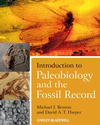Web Links
Chapter 2
Stratigraphy
The following web sites give some background to the principles of stratigraphy:
http://en.wikipedia.org/wiki/Stratigraphy
http://www.msnucleus.org/membership/html/jh/earth/stratigraphy/index.html
http://en.wikipedia.org/wiki/Chronostratigraphy
The official web site of the International Commission on Stratigraphy is
The principles of sequence stratigraphy are outlined here: http://www.uga.edu/strata/sequence/seqStrat.html and http://sepmstrata.org/
Box 2.1
Read more about zone (or index) fossils at http://en.wikipedia.org/wiki/Index_fossil and http://pubs.usgs.gov/gip/geotime/fossils.html
Box 2.2
Read more about graphic correlation as a method of quantitative stratigraphy, at
http://strataplot.egi.utah.edu/GraphicCorrelation.htm
http://www.uga.edu/strata/sequence/index.html
http://www.chronos.org/education/sequence-stratigraphy2.html
http://www.xs4all.nl/~strats/graphcor.htm
Box 2.3
Read more about the changes in formal definitions of Ordovician stratigraphy here:
http://www.ordovician.cn/
http://www.palaeos.org/Ordovician_stratigraphy
Box 2.5
Read about the Chronos initiative at http://portal.chronos.org/gridsphere/gridsphere
Paleogeography
There are many web sites about paleogeography and continental drift, including:
http://en.wikipedia.org/wiki/Palaeogeography
http://en.wikipedia.org/wiki/Continental_drift
http://library.thinkquest.org/17457/platetectonics/2.php
http://pubs.usgs.gov/gip/dynamic/historical.html
The best sources for global paleomaps are Christopher Scotese's site at http://www.scotese.com/ and Ron Blakey's site at http://jan.ucc.nau.edu/~rcb7/global_history.html, and you can see an animation of continental movements through the past 290 million years (i.e., Permian to the present day), at http://www.geo.arizona.edu/~rees/global290-0pgeogrev.mov, a longer-term animation of continental movements since the Proterozoic, at http://www.youtube.com/watch?v=jOzh5YuLVb4 or http://www.ucmp.berkeley.edu/geology/anim1.html, and rotating globes from different times in the past, at http://geology.swau.edu/paleocurrents_1.html
Box 2.7
Read more about latitudinal diversity gradients at http://en.wikipedia.org/wiki/Latitudinal_gradients_in_species_diversity

